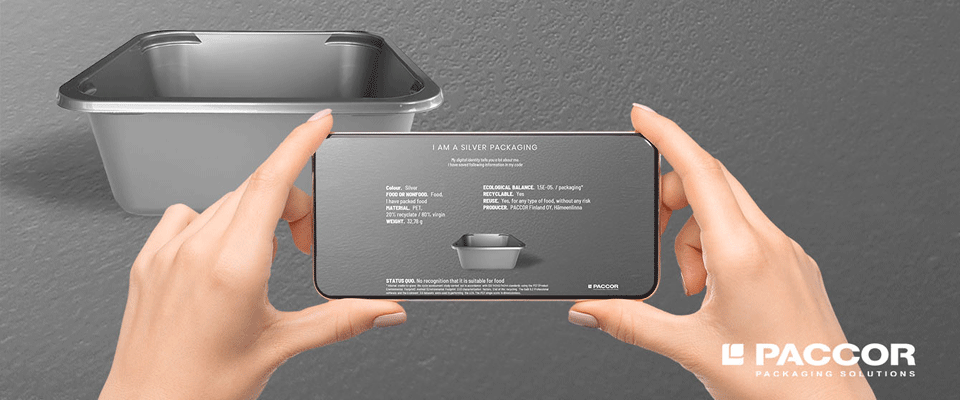Visually imperceptible barcode helps sort all kinds of plastics
“As one of the leading manufacturers of packaging, we want to close the material loop by enabling full recyclability of our products. Therefore we have set ourselves the goal of minimizing packaging waste, conserving resources and saving energy wherever possible,“ says Andreas Schuette, Chief Executive Officer at PACCOR.
What happens to the packaging when it is no longer needed? How much is actually recycled? For PACCOR today's recycling rate is too low. 50 % of the plastic ends up in the residual waste by mistake, which is burned directly unsorted. The problem to be able to recycle packaging, e.g. in food grade packaging, is that the packaging does not present itself properly when it ends up in a reusable material stream.
Based on the digital barcode technology provided by Digimarc Corporation, PACCOR introduced a solution which allows customers to use this Digimarc Barcode directly on the surface of rigid plastic packaging without any extra marking like labels or direct print. This code is able to provide consumers and disposal companies with information about the respective packaging – anytime and anywhere. This means that even if the packaging ends up in the residual waste by mistake, the scanner in the recycling plant is capable of correcting the error. In this way, resources could be conserved, recycling promoted and C0₂ emissions significantly reduced in the future.
“For the first time, waste with digital identity enables us to sort packaging efficiently. For example, the scanner in the sorting system recognizes whether a container was used for food or non-food products, sorts all colored packaging – including black – or receives information on whether the reusable material can be recycled or composted. And multi-layer packaging can also be professionally separated and recycled,” explains Nicolas Lorenz, Chief Commercial Officer at PACCOR.
The Digimarc Platform is a principal technology of the cross-value chain initiative ‘HolyGrail 2.0’ to improve sortation and higher-quality recycling rates for packaging in the European Union (EU). The HolyGrail 2.0 Leadership Team includes world-leading brands involved in food and consumer products manufacturing and distribution. Over 85 cross-industry companies and organizations have signed to be active participants in the next stages of pilots and industrial-scale demonstrations towards commercialization.
“We are excited to work closely with PACCOR to deliver a technical solution to industry that will increase the quality and quantity of recyclate that would otherwise go to landfill or incineration. Together we are demonstrating how ‘one way’ becomes ‘circular’,” states Larry Logan, Chief Evangelist at Digimarc.
Digimarc Barcodes can be scanned with smartphone cameras. The main advantage of Digimarc Barcodes is that they can be extended imperceptibly over the entire label surface without interfering with the package design. They can also be extended decoratively over the entire plastic surface. Cameras, such as in sorting modules or smartphones, can capture these codes on the packaging. From production to trade and recycling, the interactive markings offer added value. Consumers can find out about the ingredients and the production of both the product and the packaging while shopping. When the packaging has reached the end of its useful life, the code provides information about its own recycling process.
PACCOR is the first packaging manufacturer who managed to apply Digimarc Barcode to commercially available rigid plastic packaging surfaces.
“In cooperation and with the aim of taking full responsibility for the materials – even after consumption – we would like to encourage all decision-makers and all companies along the value chain to get involved and make it commercially viable. Only what is openly available will change the world,” concludes Andreas Schuette, CEO at PACCOR.




